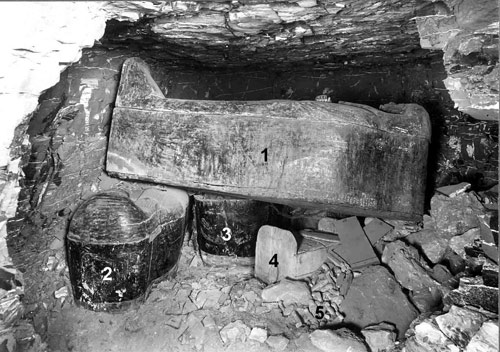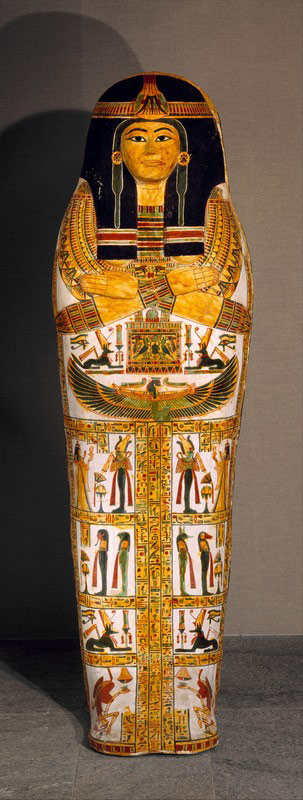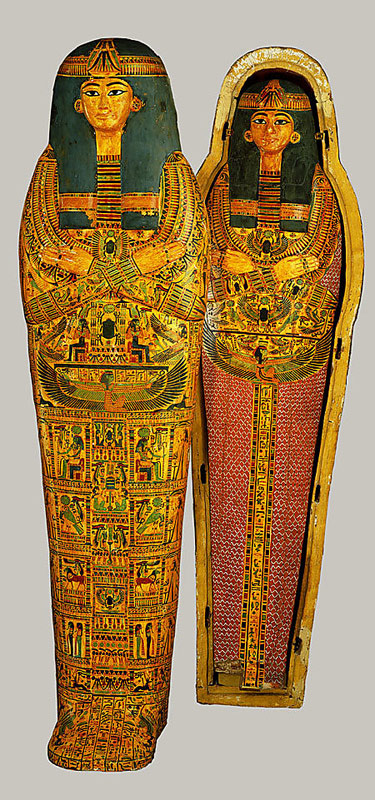 Traveling Exhibitions
Traveling Exhibitions Traveling Works of Art
Traveling Works of Art Conservation Projects
Conservation Projects Excavations
Excavations Fellows
Fellows Exchanges & Collaborations
Exchanges & Collaborations Multiple Items
Multiple Items
The Met Around the World presents the Met’s work via the global scope of its collection and as it extends across the nation and the world through a variety of domestic and international initiatives and programs, including exhibitions, excavations, fellowships, professional exchanges, conservation projects, and traveling works of art.
The Met Around the World is designed and maintained by the Office of the Director.
Traveling
Exhibitions
The Met organizes large and small exhibitions that travel beyond the Museum's walls, extending our scholarship to institutions across the world. See our national and international traveling exhibition program from 2009 to the present.
Traveling
Works of Art
The Met lends works of art to exhibitions and institutions worldwide to expose its collection to the broadest possible audience. See our current national and international loans program.
Conservation
Projects
The preservation of works of art is a fundamental part of the Met's mission. Our work in this area includes treating works of art from other collections. See our national and international conservation activities from 2009 to the present.
Excavations
The Met has conducted excavations for over 100 years in direct partnership with source countries at some of the most important archaeological sites in the world. Today we continue this tradition in order to gain greater understanding of our ancient collections. See our national and international excavation program from the Met's founding to the present.
Fellows
The Met hosts students, scholars, and museum professionals so that they can learn from our staff and pursue independent research in the context of the Met's exceptional resources and facilities. See the activities of our current national and international fellows.
Exchanges & Collaborations
The Met's work takes many forms, from participation in exchange programs at partnering institutions and worldwide symposia to advising on a range of museum issues. These activities contribute to our commitment to advancing the work of the larger, global community of art museums. See our national and international exchange program and other collaborations from 2009 to the present.
 Coffin of Henettawy (25.3.182a,b) as discovered in her tomb (MMA 59). Photograph by Harry Burton, 1924 (M5C 148). Archives of the Egyptian Expedition, Department of Egyptian Art.
Coffin of Henettawy (25.3.182a,b) as discovered in her tomb (MMA 59). Photograph by Harry Burton, 1924 (M5C 148). Archives of the Egyptian Expedition, Department of Egyptian Art. Tomb MMA 60 after removal of one coffin and three shabti boxes: (1) coffin of Tabakmut; (2) coffin of a man named Menkheperre; (3) coffin of Princess Henettawy (probably daughter of Menkheperre, High Priest of Amun); (4) shabti box; (5) shabtis. Photograph by Harry Burton, 1924 (M5C 201). Archives of the Egyptian Expedition, Department of Egyptian Art.
Tomb MMA 60 after removal of one coffin and three shabti boxes: (1) coffin of Tabakmut; (2) coffin of a man named Menkheperre; (3) coffin of Princess Henettawy (probably daughter of Menkheperre, High Priest of Amun); (4) shabti box; (5) shabtis. Photograph by Harry Burton, 1924 (M5C 201). Archives of the Egyptian Expedition, Department of Egyptian Art.
Outer Coffin of Henettawy
Third Intermediate Period, Dynasty 21, ca. 1000–942 B.C.
Egypt, Upper Egypt; Thebes, Deir el-Bahri, Tomb of Henettawy (MMA 59), MMA 1923–24
Rogers Fund, 1925 (25.3.182a,b)


Inner Coffin of Henettawy
Third Intermediate Period, Dynasty 21, ca. 1000–942 B.C.
Egypt, Upper Egypt; Thebes, Deir el-Bahri, Tomb of Henettawy (MMA 59), MMA 1923–24
Rogers Fund, 1925 (25.3.183a,b)

Egypt
1923–1924
Egypt's New Kingdom ended in about 1070 B.C. with the death of Ramesses XI, last king of Dynasty 20. This was followed by several centuries of divided rule known as the Third Intermediate Period. At the beginning of this time, in Dynasty 21, power was shared by a family of pharaohs who were centered at Tanis in the eastern Delta, and by the High Priests of the god Amun at Thebes, who also used the title "king."
During the long tenure of the fourth High Priest of Amun, Menkheperre (ca. 1045–992 B.C.), a tomb was carved into the rocky slope just north of the enclosure wall of Hatshepsut's temple at Deir el-Bahri. This tomb was used over a number of generations by Menkheperre's family, but eventually it was entered by ancient robbers. Over the millennia, tons of debris washed into the tomb and when it was discovered in the late winter of 1924, it took many days of digging through compacted sand and crumbling rock before the Museum's excavators found the original burial chamber, which contained six coffins. One was inscribed for Henettawy, daughter of "king" Painedjem I (first of the High Priests of Dynasty 21); one belonged to a princess Henettawy, probably a daughter of the High Priest Menkheperre; a third recorded the name Djedmutesankh, probably Menkheperre's wife or daughter. These three women were also buried with boxes of shabtis—funerary figurines intended as substitute labor for the deceased in the afterlife—and with papyrus scrolls, or Books of the Dead, inscribed with spells to help the spirit negotiate the perilous journey to the afterworld.
A number of other individuals had also been buried in the tomb, but their connections with the High Priests are not known.
The Tomb of Henettawy (MMA 59)
Earlier in the 1923–24 excavation season, the burial place of yet another Henettawy (a popular name in Dynasty 21) had been found in the area north of Hatshepsut's temple. This tomb originally was prepared in the time of Hatshepsut for a man named Minmose, but his burial had been ransacked by thieves sometime before the tomb was reused for Henettawy.
Like the female relatives of the High Priests found in MMA tomb 60, this Henettawy participated in religious ceremonies as a Singer of Amun. As far as we know, however, she was not related to the High Priests. In Dynasty 21, coffins were sometimes the only piece of funerary equipment that assisted a person's spirit into the afterlife, and they were decorated more elaborately than in earlier periods. Although nothing else was found in her tomb, Henettawy's pair of nested coffins and mummy cover are superb examples of the coffin-maker's art and a visual testament to Henettawy's high status.
The Museum's discovery of MMA tombs 59 and 60 contributed substantially to our understanding of the burial customs for people of high standing in Dynasty 21. Objects that came to the Museum in the division of finds may be seen in Egyptian galleries 126 and 130.

